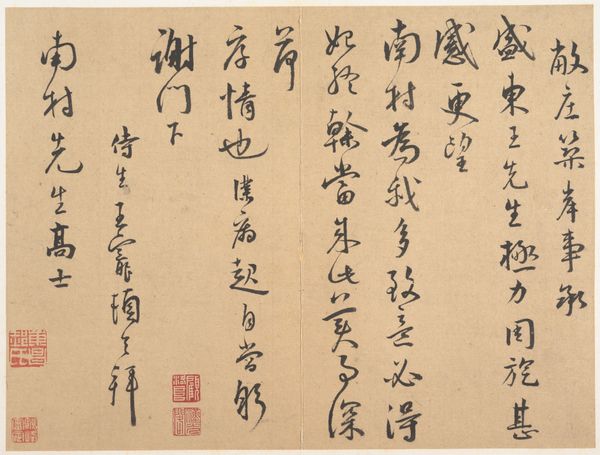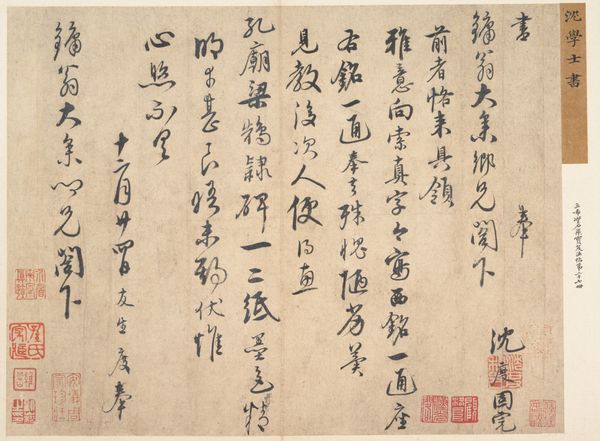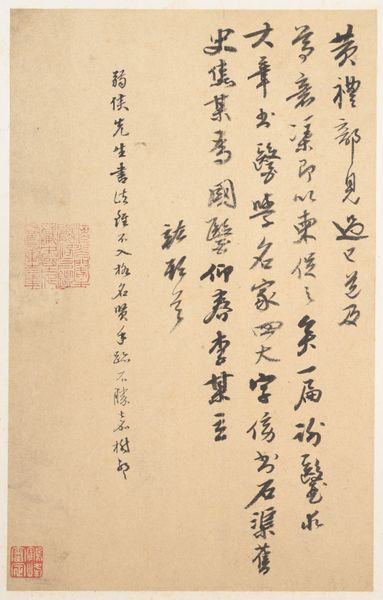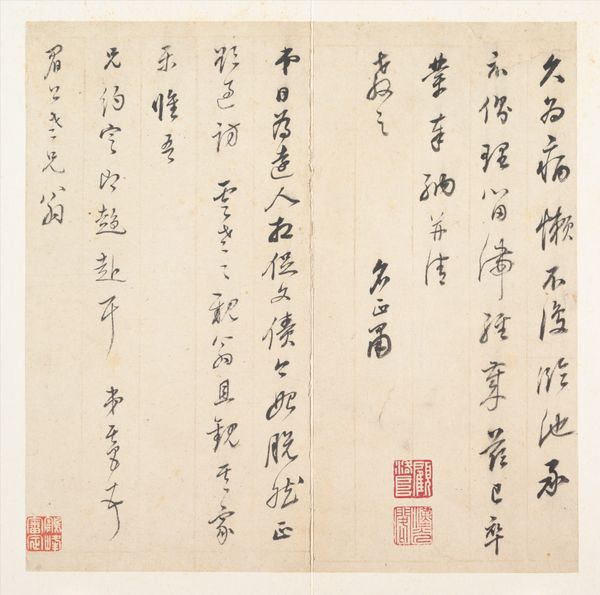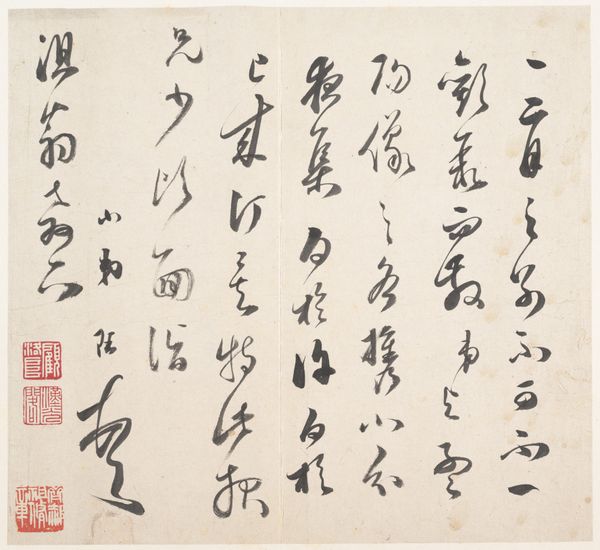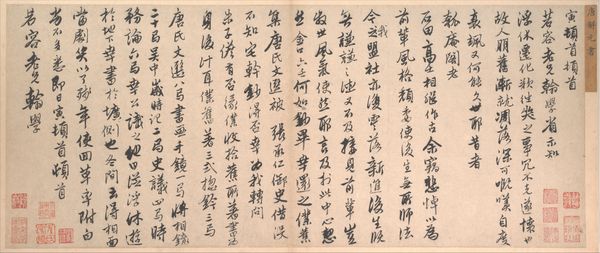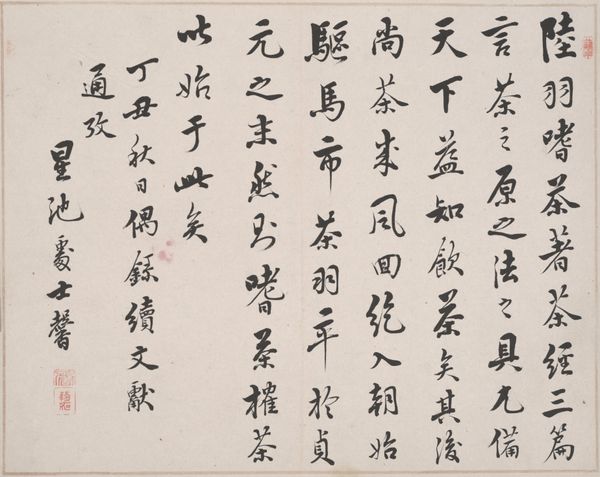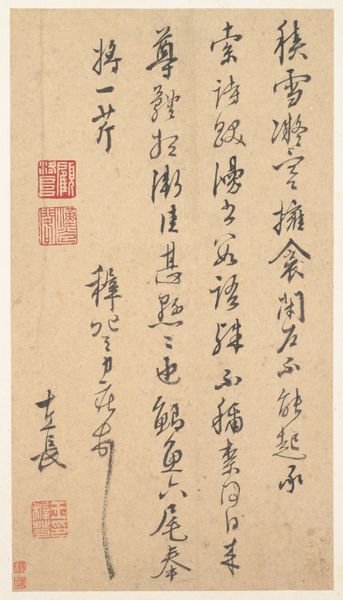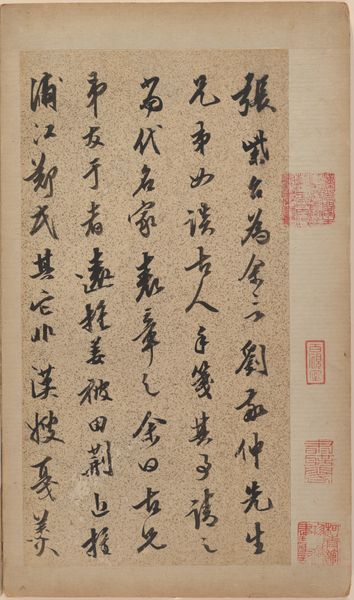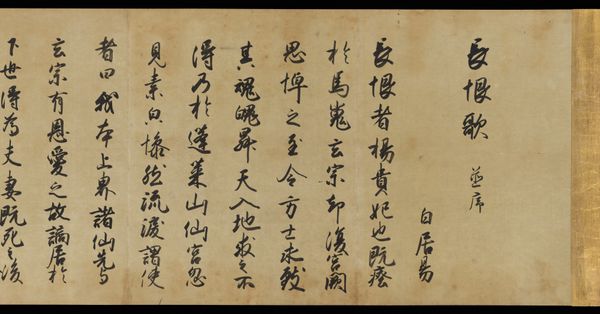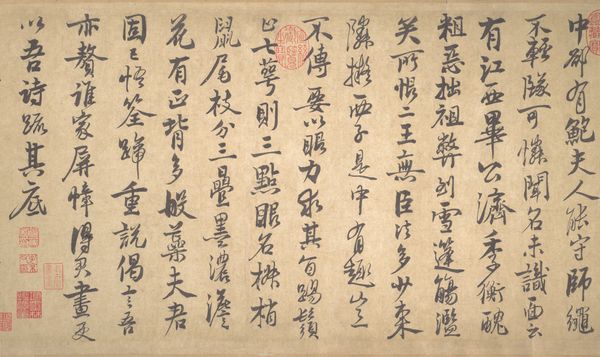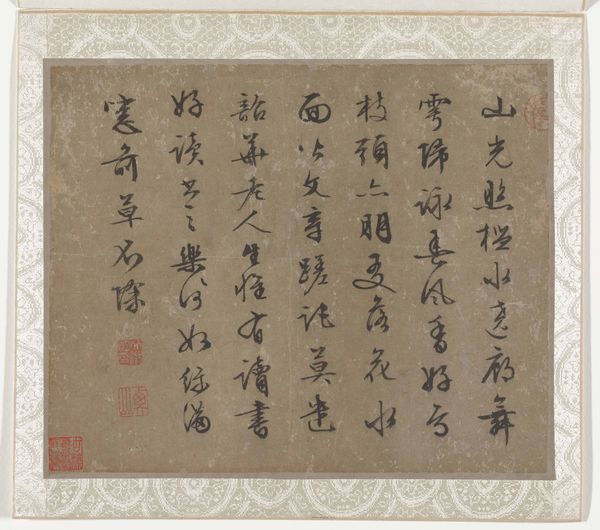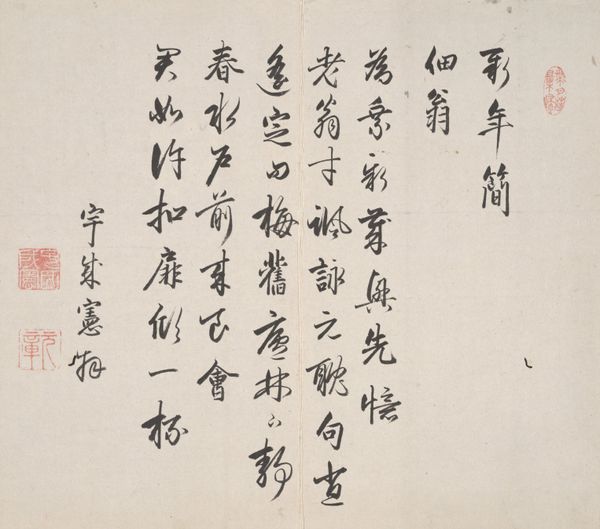
drawing, paper, ink
#
drawing
#
asian-art
#
paper
#
22_ming-dynasty-1368-1644
#
ink
#
china
#
calligraphy
Dimensions: 11 1/2 x 15 5/8 in. (29.2 x 39.7 cm)
Copyright: Public Domain
Curator: Here we have "Draft Poem for Seeing off Lin Jun" by Wen Peng, an ink drawing on paper. This example of calligraphy dates back to the Ming Dynasty. What strikes you about it initially? Editor: The stark contrast between the ink and paper gives the work an immediate intensity. The characters seem to dance across the page, conveying both urgency and restraint. It also strikes me that the tools must be fundamental: paper, ink, and the calligrapher’s wrist. Curator: The composition employs what we might term a kind of structured asymmetry, doesn't it? The varying sizes and densities of the characters create visual rhythms, almost musical in their arrangement on the page. Notice, too, how the seals punctuate the text. Editor: Absolutely. It raises questions about the social function of this farewell poem, I wonder: Was this destined to be delivered privately to Lin Jun? The work exudes this tension, this intimate correspondence, now rendered as an artifact for public view, even as the text gestures toward emotionality and friendship. Curator: Precisely, and how the visual forms complement that. The individual brushstrokes exhibit considerable variation—thick, thin, rapid, deliberate. It indicates a tension between adherence to calligraphic tradition and personal expression of the artist. Semiotically, each stroke carries meaning beyond its immediate representational function. Editor: Beyond that even, it suggests a real moment and specific manual labor from a master calligrapher: Did Wen Peng reflect much, or did he perform these strokes almost instinctively to record emotion in the moment? It is a fleeting instant rendered permanent through material. Curator: And to build on that materiality, consider how the very absorbency of the paper dictated the flow of the ink, the character of each line, making the selection of these materials critical. The performance exists precisely in how ink, brush, hand and surface interact in controlled spontaneity. Editor: True. For me, the poem deepens the significance by suggesting themes of friendship, impermanence, and the inherent connection between labor and artistry within cultural expression. Curator: An astute observation. The tension of those interplays yields the enduring power within Wen Peng’s piece. Editor: I agree. The context and inherent production become a mirror through which one views not only the aesthetic appeal of form, but labor.
Comments
No comments
Be the first to comment and join the conversation on the ultimate creative platform.
